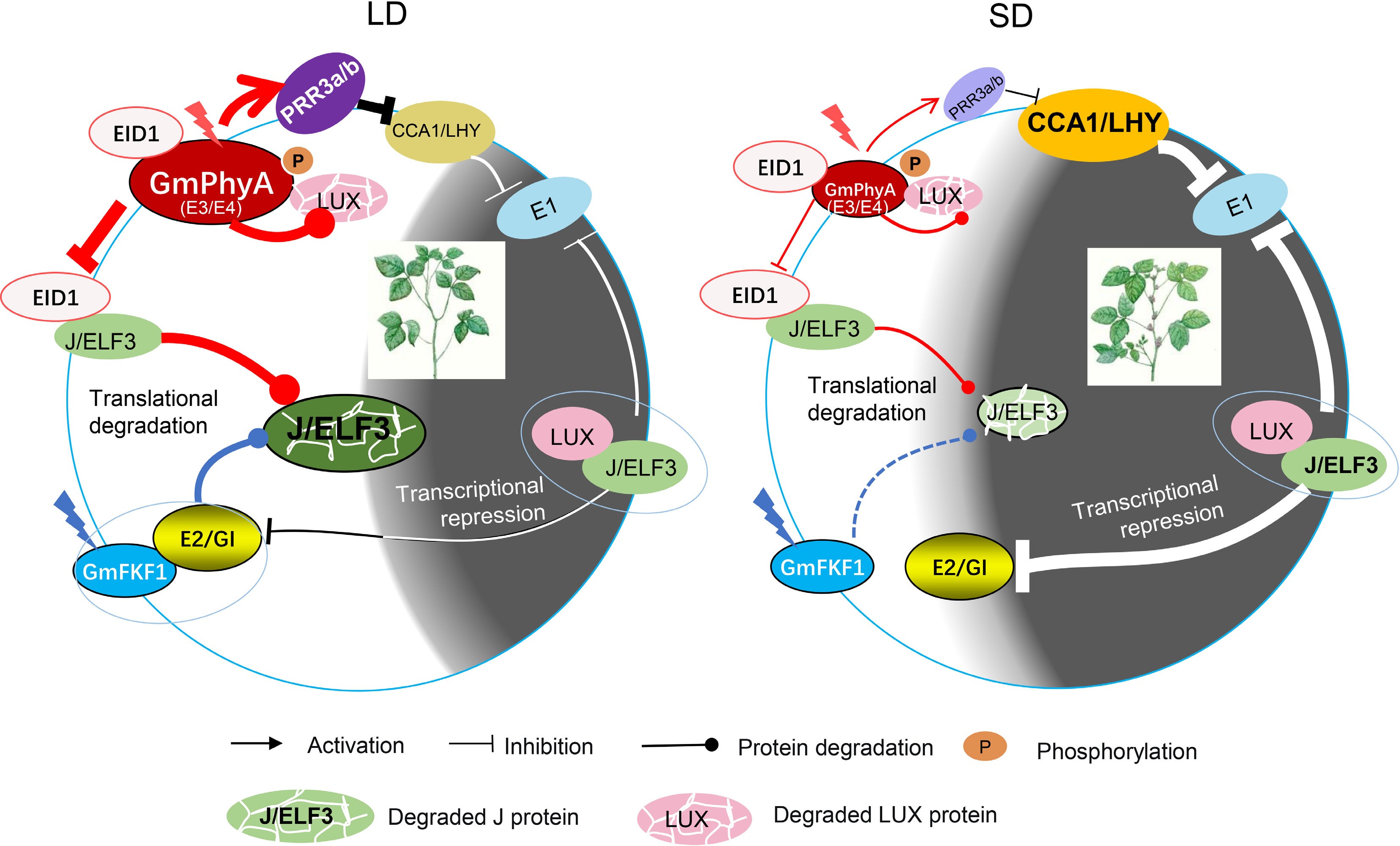-

Figure 1.
Photoperiodic flowering network in soybean. Under LD conditions, photoexcited FKF1 interact with E2 and target J protein to degradation. Also, photoexcited E3/E4 interact with GmEID1, acting as a competitive interaction inhibitor of GmEID1 and J, which also leads to degradation of J. Photoexcited E3/E4 also interact and promote the degradation of LUX. E3/E4 can promote the expression of PRR3a/PRR3b to inhibit CCA1 and LHY, the repressor of E1. Together, E1 is highly expressed and delays flowering of soybean under LD conditions. Under SD conditions, the functions of E3 and E4 are compromised, which may indirectly promote the accumulation of J, LUX and CCA1/LHY, therefore effectively inhibit the expression of E1. Moreover, although FKF1 can somehow promote the degradation of J protein, the degradation of J by E2 and the transcription regulation of E2 by EC disappear. Hence, E1 is highly repressed and promotes flowering under SD condition.
Figures
(1)
Tables
(0)